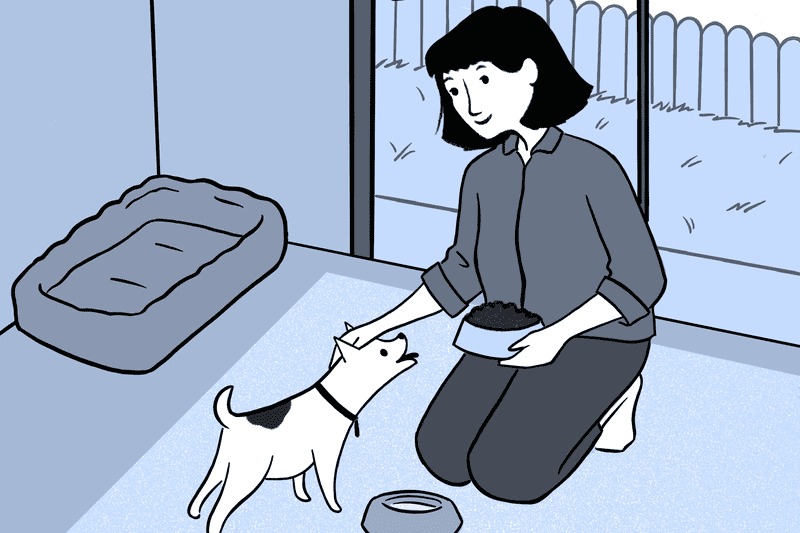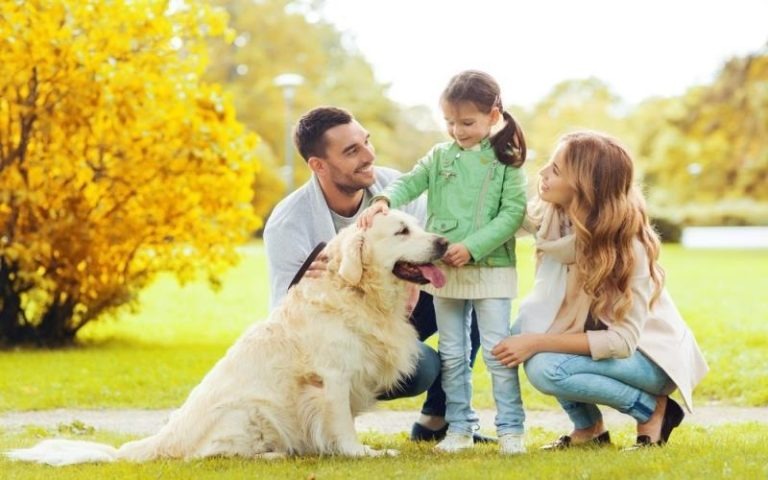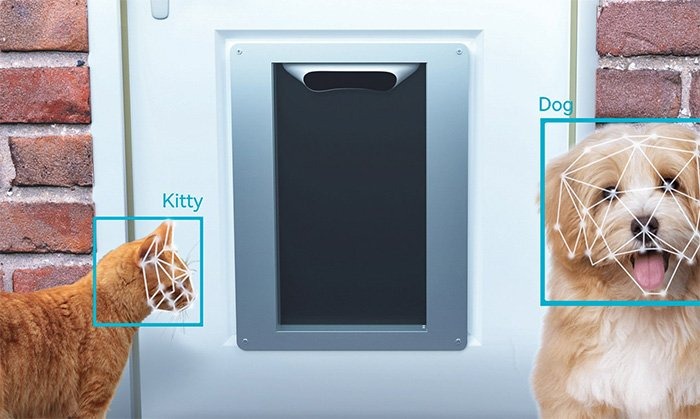
The economics of pet ownership in Tier-2 / Tier-3 Indian cities.
The rise of pet ownership in India’s Tier-2 and Tier-3 cities reflects a growing blend of emotional attachment, lifestyle aspiration, and economic investment. From adoption and purchase costs to healthcare, grooming, and accessories, smaller cities are witnessing a dynamic pet economy shaped by income levels, cultural shifts, digital access, and emerging entrepreneurial opportunities in the pet care sector.
🐶 Pet Star
66 min read · 6, Oct 2025

Introduction
Over the past decade, India’s pet population has seen remarkable growth, driven not just by urban elites but also by middle-class families in Tier-2 and Tier-3 cities. While metropolitan centers like Mumbai, Delhi, and Bengaluru still dominate the pet care industry, the real momentum is now shifting to cities like Lucknow, Coimbatore, Surat, Jaipur, Indore, Ranchi, and Dehradun. These emerging urban centers, buoyed by rising disposable incomes, social media influence, and greater emotional awareness toward animals, are transforming the pet care landscape.
Yet, owning a pet in these cities involves a distinctive economic and social equation. The costs, availability of services, and cultural factors differ widely from those in metros. This article explores the complete economic ecosystem surrounding pet ownership in India’s smaller cities—covering acquisition, maintenance, healthcare, grooming, insurance, and emotional value—while also analyzing how this growing trend affects local economies.
The Pet Boom Beyond Metros
India’s pet care market was valued at over USD 1.5 billion in 2023, with projections suggesting it will surpass USD 3 billion by 2028. A significant part of this growth is being driven by Tier-2 and Tier-3 cities, where the number of new pet adoptions has risen by nearly 35% in the past five years. Factors behind this surge include:
- Rising middle-class incomes: Families now have more disposable income for lifestyle and emotional comforts.
- Cultural acceptance: Pets, especially dogs and cats, are increasingly viewed as family members rather than security assets.
- Pandemic influence: COVID-19 lockdowns encouraged companionship needs, leading to higher adoption rates in smaller towns.
- Digital access: E-commerce platforms now deliver premium pet foods and accessories even to semi-urban areas.
Initial Investment: Buying or Adopting a Pet
The first economic decision in pet ownership is whether to buy or adopt. In Tier-2 and Tier-3 cities, adoption from shelters is slowly gaining popularity, but many still prefer purchasing pedigree breeds.
- Adoption Costs: Usually free or minimal (₹500–₹2,000) to cover vaccination and sterilization.
- Purchase Costs:
- Indie/Desi breeds: ₹5,000–₹10,000
- Labrador Retriever, German Shepherd, or Beagle: ₹15,000–₹35,000
- Exotic breeds like Husky or Golden Retriever: ₹50,000–₹1 lakh
While adoption is economical and ethically encouraged, many people still view pedigree dogs as status symbols in smaller cities, reflecting a mixture of aspiration and limited awareness.
Monthly Maintenance Costs
Pet ownership costs in smaller cities are substantially lower than in metros, but still significant relative to local income levels. A typical breakdown includes:
Expense Type Average Monthly Cost (₹) Notes Food & Treats 1,000–4,000 Premium brands cost more; homemade diets cheaper Grooming 500–2,000 Limited salons in smaller cities; many opt for DIY grooming Health & Vet 300–1,500 Routine check-ups, deworming, and vaccinations Accessories & Toys 300–1,000 Includes leashes, beds, chew toys Miscellaneous (Training, Walkers, Boarding) 500–2,000 Available in larger Tier-2 cities Total Monthly Estimate: ₹2,500–₹8,500 depending on breed and lifestyle.
While this may seem moderate, it constitutes around 10–20% of an average Tier-2 household’s discretionary income, which makes pet care a conscious lifestyle choice rather than an impulse.
Veterinary and Healthcare Access
This is where Tier-2 and Tier-3 cities face the sharpest gaps. The number of qualified veterinarians and well-equipped clinics remains limited. Many pet owners travel to nearby Tier-1 cities for advanced procedures or diagnostics.
However, teleconsultation apps and online pharmacies are bridging this gap. Startups like Heads Up for Tails, Pawfect, and Wiggles offer virtual vet services and doorstep deliveries. The government’s National Animal Disease Control Program is also improving vaccination coverage, particularly for stray and domestic animals.
Still, average vet consultation fees in smaller cities are ₹200–₹500 per visit, compared to ₹800–₹1,500 in metros—making healthcare more affordable but sometimes less advanced.
Pet Food and Nutrition Market
The Indian pet food industry is seeing localized adaptation. In Tier-2 and Tier-3 cities, owners often rely on home-cooked meals (rice, chicken, milk, and chapati) rather than branded pet food. However, branded options like Pedigree, Drools, and Royal Canin are rapidly penetrating these regions through offline retailers and online marketplaces.
The challenge lies in awareness—many owners do not fully understand nutritional balance, leading to overfeeding or improper diets. Companies are now launching smaller, affordable packs (₹100–₹200) targeting these semi-urban consumers, making entry easier for first-time pet parents.
Grooming, Training, and Boarding
Pet grooming salons and training centers are slowly emerging in Tier-2 cities like Bhopal, Mysuru, and Nagpur, but Tier-3 cities largely rely on self-care or informal neighborhood services. The average grooming session costs between ₹600 and ₹1,200 for small dogs and can go up to ₹2,000 for larger breeds.
Pet boarding facilities are scarce, creating logistical problems during travel. Some families depend on neighbors or relatives to care for pets temporarily. However, pet hostels and mobile grooming vans are beginning to enter this untapped market, signaling entrepreneurial opportunities in the growing pet economy.
Insurance and Legal Awareness
Pet insurance, still in its infancy in India, is gradually gaining traction in smaller cities. Major insurers like Future Generali, Bajaj Allianz, and Digit now offer policies covering accidents, illnesses, and third-party liabilities. Premiums range from ₹500 to ₹5,000 annually, depending on the breed and coverage.
Legal awareness, however, remains limited. Many owners are unaware of animal welfare laws such as the Prevention of Cruelty to Animals Act (1960) or local licensing requirements. NGOs are playing a vital role in educating pet parents about their responsibilities and rights.
The Local Economy Impact
The rise in pet ownership has spawned a micro-economy around animal care in smaller cities. Pet food shops, grooming parlors, boarding services, trainers, and even photographers are now finding customers beyond metro borders. Local startups and youth entrepreneurs are capitalizing on this by offering niche services like:
- Home delivery of pet supplies
- Customized pet clothing and accessories
- Pet-friendly cafés and social events
- Veterinary ambulance and telehealth services
This expansion not only creates employment opportunities but also boosts animal welfare awareness and urban empathy toward animals.
Cultural and Social Dimensions
While economic capacity matters, the cultural dimension plays an equally strong role. In many Tier-3 cities, older generations still see pets—especially dogs—as “watchdogs” rather than companions. However, younger, educated populations are shifting this view, treating pets as emotional partners.
Social media influencers and YouTube pet vloggers from smaller towns have also helped popularize responsible ownership. Schools and NGOs are hosting pet awareness drives, signaling a generational change in pet ethics and empathy.
Challenges in Tier-2/Tier-3 Pet Ownership
- Limited infrastructure: Few specialized pet hospitals, trainers, or shelters.
- Inconsistent supply chains: Pet foods and accessories may be expensive or unavailable locally.
- Lack of awareness: Misconceptions about nutrition, vaccination, and sterilization persist.
- Social barriers: Not all neighborhoods are pet-friendly, especially in rental housing.
- Financial sensitivity: Middle-income families may struggle with emergency medical costs.
Despite these, digitalization, online learning, and rising incomes are progressively resolving many challenges.
Future Outlook
The next decade promises to be transformative for India’s pet economy outside metros. With the expansion of e-commerce logistics, rural veterinary programs, and pet-centric businesses, Tier-2 and Tier-3 markets are poised for a compound annual growth rate (CAGR) exceeding 15%.
Expect more pet cafés, mobile clinics, and local pet events. Additionally, government and NGO collaborations could ensure better stray management and pet registration systems, improving both human and animal welfare in semi-urban India.am across India’s emerging urban centers.
Would you like me to format this article for KDP (Amazon Kindle) style layout (with headings, subheadings, and indentation for publishing)?
India’s pet culture is no longer confined to the affluent urban pockets of Mumbai, Delhi, or Bengaluru. Over the last decade, Tier-2 and Tier-3 cities such as Lucknow, Indore, Coimbatore, Jaipur, Nagpur, Dehradun, and Ranchi have experienced a silent yet powerful shift in the way families perceive and invest in pet ownership. The economics of keeping pets in these growing cities is a fascinating blend of emotion, aspiration, and evolving financial capacity. As disposable incomes rise, access to digital marketplaces widens, and social attitudes become more compassionate, pets are fast becoming integral members of middle-class Indian households. Yet, beneath this emotional transformation lies a practical question — how much does it really cost to own and care for a pet in semi-urban India, and what are the broader economic implications of this emerging trend? Pet ownership begins with a simple but crucial decision: whether to buy or adopt. In smaller cities, adoption is slowly gaining ground due to increased NGO activity and awareness campaigns, but purchasing still dominates. Pedigree breeds like Labradors, German Shepherds, and Golden Retrievers often cost between ₹15,000 and ₹50,000, while exotic breeds such as Huskies or Shih Tzus can command up to ₹1 lakh. Adoption, on the other hand, is typically free or minimal, with costs limited to basic vaccination or sterilization fees of ₹500–₹2,000. However, in many Tier-2 and Tier-3 towns, pets are still viewed as status symbols, and owners often prefer pedigrees over Indie or mixed breeds, reflecting a blend of aspiration and limited awareness about the advantages of adopting local breeds. Once a pet joins the family, the monthly maintenance cost becomes a defining economic factor. Food, healthcare, grooming, and accessories together form the recurring expenditure. Pet owners in smaller cities typically spend between ₹2,500 and ₹8,500 a month, depending on breed, diet, and lifestyle. Affordable pet food brands such as Pedigree and Drools are widely available, while premium imported brands like Royal Canin remain less common due to their cost and limited local availability. Many owners continue to rely on home-cooked meals—rice, milk, eggs, chicken, or chapati—to feed their pets, balancing affection with economic prudence. The growing availability of online pet stores and doorstep delivery options from platforms like Heads Up for Tails and Wiggles has made it easier for semi-urban consumers to access nutritious and specialized pet products. Healthcare and veterinary access present a different economic dimension altogether. In Tier-2 cities like Bhopal or Mysuru, pet clinics and qualified veterinarians are becoming more common, yet in smaller Tier-3 towns, access to quality healthcare remains limited. Most families rely on government veterinary hospitals or general practitioners who may not be trained in advanced animal care. Routine vaccinations, deworming, and check-ups cost between ₹300 and ₹1,500 per month—affordable but not always comprehensive. Serious conditions or surgeries often compel pet owners to travel to nearby Tier-1 cities for treatment, adding transport and boarding costs. Nevertheless, digital healthcare is bridging some of these gaps; online vet consultations and telemedicine platforms are gaining popularity, making preventive care accessible even in remote areas. Grooming, training, and boarding are the luxury segments of the pet economy that are slowly but steadily spreading into smaller cities. While metros boast of full-service grooming spas and pet hotels, Tier-2 and Tier-3 towns mostly rely on self-care or local home-based groomers. A grooming session costs between ₹500 and ₹1,500, depending on size and breed. Training, especially for larger or more energetic dogs, can cost ₹1,000–₹3,000 per month, though many owners depend on online tutorials or community trainers. Boarding remains one of the weakest links—pet hostels are rare, forcing families to rely on relatives or neighbors when traveling. Yet, this scarcity is also fueling entrepreneurship; young professionals in smaller towns are launching mobile grooming vans, pet-sitting services, and home-based pet care startups, contributing to local job creation and economic diversification. Beyond household budgets, the ripple effect of growing pet ownership is reshaping local economies. The rise of pet shops, local breeders, small-scale pet food distributors, and grooming services has created a mini-industry in smaller towns. Even ancillary sectors like photography, fashion, and tourism are seeing “pet-friendly” versions emerge. For instance, cafés and resorts in cities like Jaipur and Coimbatore now market themselves as pet-welcoming spaces. The economic impact is not limited to service providers; it extends to the digital ecosystem as well. E-commerce logistics firms benefit from the growing demand for pet products, and micro-entrepreneurs use social media to sell handmade collars, toys, and organic treats. Culturally, this boom signals a generational change. Traditionally, animals in Indian households—especially in rural or semi-urban settings—were valued for utility, not companionship. Dogs guarded homes, cats chased pests, and cows symbolized prosperity. But in the last decade, emotional awareness and global cultural exposure through digital media have redefined these roles. Pets are now seen as emotional anchors, stress relievers, and even social companions. Millennials and Gen Z families, many of whom live in nuclear households, are adopting pets as extensions of family life. The COVID-19 pandemic accelerated this shift, as lockdown isolation encouraged many to seek companionship in animals. However, this cultural evolution also brings challenges. Infrastructure gaps persist—most Tier-3 cities lack dedicated pet parks, emergency veterinary clinics, or even reliable pet-friendly housing. Pet food and supplies are sometimes overpriced due to transportation and limited availability. Additionally, awareness around vaccinations, sterilization, and nutrition remains patchy. Some owners continue harmful practices like feeding sweets or raw milk to pets, unaware of their health risks. Legal literacy is another concern; very few pet owners know about the Prevention of Cruelty to Animals Act or the local municipality’s licensing rules for pet ownership. On the brighter side, NGOs and animal welfare groups are stepping in to educate communities and promote responsible ownership. Economically, owning a pet in a Tier-2 or Tier-3 city can take up 10–20% of a household’s monthly discretionary income. For a middle-class family earning ₹40,000–₹60,000 per month, maintaining a dog or cat requires thoughtful budgeting. Yet, many continue to do so happily, viewing their pets as emotional investments rather than financial burdens. The psychological returns—stress reduction, companionship, and unconditional affection—often outweigh the expenses. In fact, studies have shown that pet ownership enhances overall well-being, improves social empathy, and fosters a sense of community, benefits that indirectly strengthen social cohesion in smaller cities. From a policy and market perspective, the next decade holds immense promise. The Indian pet care market, estimated at over USD 1.5 billion in 2023, is expected to double by 2028, and a significant portion of this growth will come from non-metro regions. With improved logistics, awareness campaigns, and tailored product offerings, the affordability and accessibility gap between Tier-1 and Tier-3 cities is narrowing. Local entrepreneurs are likely to dominate this evolving space by offering regionally customized solutions—such as mobile vet clinics, affordable adoption drives, and local-brand pet foods suited to Indian conditions. Thus, the economics of pet ownership in smaller Indian cities is far more than a question of money—it reflects a changing social narrative. Pets are becoming part of the aspirational Indian middle class’s identity, representing compassion, comfort, and modernity. Though challenges in infrastructure, education, and affordability persist, the emotional and financial ecosystem supporting pet care is expanding rapidly. In essence, the story of pet ownership in Tier-2 and Tier-3 India mirrors the nation’s broader transformation—where economic progress meets emotional evolution, and love for animals becomes both a personal joy and a marker of societal growth.
India’s landscape of pet ownership is undergoing a profound transformation, particularly in Tier-2 and Tier-3 cities, where the combination of rising disposable incomes, increasing urbanization, exposure to global lifestyles, and a growing middle-class sensibility has shifted the perception of pets from mere utility animals or occasional household companions to fully integrated members of the family, reflecting both emotional and aspirational values; while metropolitan cities like Mumbai, Delhi, Bengaluru, and Hyderabad continue to dominate the traditional pet market in terms of sheer revenue, the remarkable growth in smaller cities such as Indore, Lucknow, Jaipur, Coimbatore, Nagpur, Dehradun, and Ranchi has created a dynamic ecosystem where pet ownership is emerging as both an emotional investment and an economic activity, and this growth is being fueled by multiple intersecting factors, including the increased availability of veterinary services, pet-friendly infrastructure, and the proliferation of e-commerce platforms offering pet foods, accessories, and healthcare products even in areas where physical retail presence remains limited; at the entry point of pet ownership, the decision between adoption and purchase represents both a financial and cultural choice, with adoption from shelters generally costing between ₹500 and ₹2,000, including vaccination and sterilization, while purchasing pedigree breeds such as Labradors, German Shepherds, or Beagles can range from ₹15,000 to ₹35,000, and more exotic breeds like Huskies or Golden Retrievers can cost upwards of ₹50,000 to ₹1,00,000, illustrating the socio-economic signaling attached to certain breeds, as many households in smaller cities still view pedigrees as markers of social status, while adoption, though ethically commendable, is slowly gaining traction thanks to increasing awareness campaigns by NGOs and social media initiatives that promote responsible pet ownership and animal welfare; once a pet enters a household, the ongoing economic implications become more tangible, as monthly maintenance costs for food, healthcare, grooming, training, and accessories generally fall in the range of ₹2,500 to ₹8,500 per month depending on breed, dietary preferences, and lifestyle choices, with food often being the largest component, where local, home-cooked diets consisting of rice, chicken, milk, and occasional treats compete with commercially available pet foods from brands like Pedigree, Drools, and Royal Canin, with the latter being delivered to semi-urban areas via e-commerce portals like Heads Up for Tails, Wiggles, and Amazon, thereby bridging the gap between urban and semi-urban consumption patterns; veterinary care remains a key determinant in the economics of pet ownership in these cities, as Tier-2 cities increasingly offer qualified veterinarians and specialized clinics, while Tier-3 cities often rely on government veterinary hospitals or general practitioners, with routine vaccinations and check-ups costing ₹300–₹1,500 per month, and serious medical interventions such as surgeries often necessitating travel to larger urban centers, highlighting a hidden financial burden that families must anticipate; however, technological interventions, particularly tele-veterinary services, mobile diagnostic units, and online pharmacies, have begun to mitigate these challenges, enabling pet owners in smaller towns to access expertise and medicines conveniently, albeit at slightly higher costs than metro counterparts due to delivery and logistical limitations; grooming, boarding, and training services, while still emerging, represent a significant area of expenditure and opportunity, with grooming costs typically ranging from ₹500 to ₹2,000 depending on breed and size, while training programs, particularly for high-energy or large-breed dogs, can cost ₹1,000–₹3,000 monthly, and boarding or pet-hostel services are scarce, forcing families to rely on neighbors, relatives, or informal arrangements during travel, although innovative entrepreneurs are increasingly introducing mobile grooming vans, home-based boarding, and pet-sitting services, creating micro-economies and employment opportunities that complement the formal pet industry; the rise of pet ownership has also stimulated local commerce in Tier-2 and Tier-3 cities, as retail shops, breeders, pet photographers, pet accessory manufacturers, trainers, and cafes offering pet-friendly environments emerge, reflecting an economic ripple effect that extends beyond the household to entire local communities, while simultaneously promoting awareness of animal welfare, better nutrition, and hygiene practices; culturally, this trend marks a significant shift, as pets, particularly dogs and cats, are transitioning from functional roles—watchdogs, pest control, or livestock guardians—to emotional companions, stress relievers, and social connectors, with younger generations, particularly millennials and Gen Z, increasingly considering pets as integral family members, a trend that has been accelerated by social media, influencers, and exposure to global pet lifestyles; COVID-19 lockdowns further amplified this cultural and emotional shift, as households sought companionship to cope with isolation, leading to an increase in both adoption rates and pet purchases in smaller towns, while simultaneously generating a heightened awareness of responsible ownership practices such as vaccination, sterilization, diet regulation, and exercise; however, despite these positive trends, several challenges persist that influence the overall economics of pet ownership, including limited availability of specialized veterinary care, inconsistent supply chains for premium food and accessories, lack of comprehensive knowledge about nutrition and preventive care among pet owners, housing and rental restrictions that may not allow pets, and financial sensitivity regarding emergency medical expenses, which together create a scenario where pet ownership, while emotionally rewarding, remains a carefully considered financial decision for middle-income families; moreover, the relatively modest income levels in Tier-2 and Tier-3 cities mean that even though monthly expenditures may seem lower than in metros, the proportional impact on household budgets is significant, often constituting 10–20% of discretionary income, compelling families to balance emotional desires with pragmatic financial planning, and thereby influencing decisions around breed selection, diet, healthcare frequency, and lifestyle integration of pets; the market potential for growth in smaller cities is immense, as the penetration of digital platforms, improved logistics, and expanding awareness about animal welfare converge to create opportunities for startups and local enterprises to offer customized services ranging from affordable grooming, telehealth, mobile veterinary units, localized nutrition products, pet training programs, pet cafés, and social events, effectively creating a thriving semi-urban pet economy that generates employment, enhances animal welfare standards, and reshapes the social fabric by fostering empathy, community engagement, and responsible ownership; policy interventions and NGO efforts are also critical, as awareness campaigns, stray animal management programs, subsidized vaccinations, and sterilization drives not only reduce healthcare risks and promote humane treatment but also support the economic sustainability of pet ownership in smaller cities, ensuring that families are better equipped to manage costs and responsibilities; in essence, pet ownership in Tier-2 and Tier-3 Indian cities represents a multi-dimensional economic ecosystem, where initial acquisition costs, recurring expenditures, healthcare, grooming, training, insurance, and even cultural perceptions intertwine to form a complex but growing sector that balances emotional fulfillment with financial considerations, reflecting the aspirations, lifestyles, and evolving social consciousness of a rapidly modernizing semi-urban India, and signaling a shift where pets are not only companions but also contributors to local economic activity, entrepreneurship, and social capital, highlighting the fact that in the emerging Indian urban landscape, the economics of pet ownership is as much about nurturing human-animal relationships and improving quality of life as it is about managing money, resources, and access to services, and as digital penetration, income growth, and awareness continue to rise, the next decade will likely witness a significant expansion of this semi-urban pet ecosystem, where responsible pet ownership becomes mainstream, infrastructure and services scale up, and the emotional, social, and financial returns of keeping pets consolidate into a sustainable, culturally accepted, and economically significant phenomenon.
Conclusion
Pet ownership in Tier-2 and Tier-3 Indian cities represents a fascinating blend of emotion, aspiration, and evolving economics. As these cities grow wealthier and more connected, pet care is shifting from luxury to lifestyle. While affordability, awareness, and infrastructure remain hurdles, the momentum toward responsible ownership is undeniable.
For many families, the real “return on investment” isn’t just companionship but also improved mental well-being, social connection, and empathy. Economically, the ripple effect of this trend is fueling small-scale entrepreneurship, job creation, and new business models tailored to the needs of semi-urban India.
In conclusion, the economics of pet ownership in smaller Indian cities is not just about cost—it’s about community, compassion, and cultural evolution.
Q&A Section
Q1:- What are the average monthly expenses for owning a pet in Tier-2 or Tier-3 cities?
Ans:- On average, pet owners spend between ₹2,500 and ₹8,500 per month, covering food, grooming, healthcare, and miscellaneous costs depending on the breed and lifestyle.
Q2:- Is pet insurance available in smaller Indian cities?
Ans:- Yes, major insurance providers now offer pet insurance across India, including smaller cities. Annual premiums range from ₹500 to ₹5,000 depending on the coverage.
Q3:- How are pet services expanding in Tier-2/Tier-3 cities?
Ans:- The pet services sector is growing rapidly through e-commerce, local grooming parlors, pet boarding homes, and online veterinary consultations, creating a new wave of local businesses.
Q4:- Are adoption rates increasing in smaller towns?
Ans:- Yes, though buying remains common, awareness about animal welfare is encouraging more people in Tier-2 and Tier-3 cities to adopt pets instead of purchasing them.
Q5:- What challenges do pet owners face in these regions?
Ans:- Key challenges include limited veterinary infrastructure, inconsistent product availability, lack of awareness about nutrition and vaccination, and social resistance in housing areas.
Similar Articles
Find more relatable content in similar Articles

How Pets Strengthen Family Bonds...
Pets are more than just compan.. Read More

Sustainable Pet Products: What to Look for in 2025...
As sustainability becomes a ce.. Read More

How Climate Change Affects Wild and Domestic Animals...
Climate change is dramatically.. Read More

Smart Homes for Pets: Automated Feeders, Doors, and Mo..
As smart home technology advan.. Read More
Explore Other Categories
© 2024 Copyrights by rPets. All Rights Reserved.